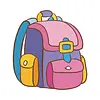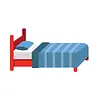Is Minecraft Addictive for Children? What Parents Should Know
Minecraft has remained one of the most popular games among kids for years. But with its widespread appeal, many parents wonder: Is Minecraft addictive? If your child spends hours immersed in the pixelated block world, you’re not alone. In this blog, we’ll explore whether Minecraft is truly addictive, how to recognize problematic behavior, and how to guide your child toward healthy gaming habits.
What Makes Minecraft So Appealing?
Minecraft attracts children for several key reasons:
- No fixed goals: kids can choose what they want to do
- Endless creativity: build, explore, design freely
- Social interaction: play together with friends or family
- Challenge and reward: setting and achieving goals feels satisfying
The game feels like an open-ended playground that constantly invites kids to return — which can be both a strength and a risk.
Is That Really Addiction?
Technically, Minecraft does not include gambling-like mechanics such as loot boxes or daily login rewards. It isn’t designed to be addictive in the clinical sense. However, the open nature of the game can easily lead to extended play sessions — especially without clear limits. That makes it more a case of excessive use than true addiction, though the symptoms can appear similar.
Warning Signs of Unhealthy Gaming Habits
As a parent, look for the following signs:
- Your child wants to play all the time and becomes upset when told to stop
- Other hobbies, schoolwork, or friendships are being neglected
- Loss of time awareness or inability to stop playing
- Mood swings or irritability when not playing
Playing a lot now and then is normal. But consistent patterns of distress or obsession deserve attention.
What Do Experts Say?
Research shows that true gaming addiction is rare, but problematic gaming behavior is more common — especially in boys aged 8 to 14. It often stems from boredom, stress, or lack of engaging offline alternatives. Minecraft can be a comforting and creative outlet, but moderation is key.
How to Encourage Healthy Play
Tips for parents to promote balance:
- Set time limits: for example, 1 hour per school day
- Mix online and offline activities: drawing, building with LEGO, sports
- Play together: stay involved and discover what your child enjoys
- Use parental controls: like Google Family Link or built-in console settings
Use Minecraft as a Learning Tool
When used creatively, Minecraft can be educational. Encourage your child to:
- Design a project, like a dream house or theme park
- Recreate geometric shapes or real-world buildings
- Use Redstone to experiment with basic logic and circuits
This turns screen time into a positive learning experience instead of passive entertainment.
When to Consider Professional Help
If your child becomes socially withdrawn, consistently neglects school, or shows aggressive behavior when asked to stop playing, it may be time to seek support from a pediatrician, school counselor, or specialist. Many countries now offer youth gaming behavior support services.
Offline Minecraft Product Alternatives
- Minecraft Drawing Set – encourages screen-free creativity
- Minecraft Backpack + Pencil Case – bring Minecraft fun into real life
- Minecraft Sketch Set – ideal for travel or school
Conclusion
Minecraft is not inherently addictive, but its open-ended design can lead to long play sessions if left unchecked. With the right support from parents, it can be part of a healthy, educational, and creative lifestyle. Discuss gaming openly, set clear boundaries, and turn Minecraft into a tool for learning and fun — not obsession.
Also read:
- What age is right for Minecraft?
- Is Minecraft good or bad for children?
- Can you play Minecraft for free?




 Themes
Themes
 Clothing
Clothing
 Shoes
Shoes
 Bags
Bags
 Children's room
Children's room
 Travel
Travel
 Gifts
Gifts
 School
School
 Other
Other
 Outlet
Outlet
 Blogs
Blogs











